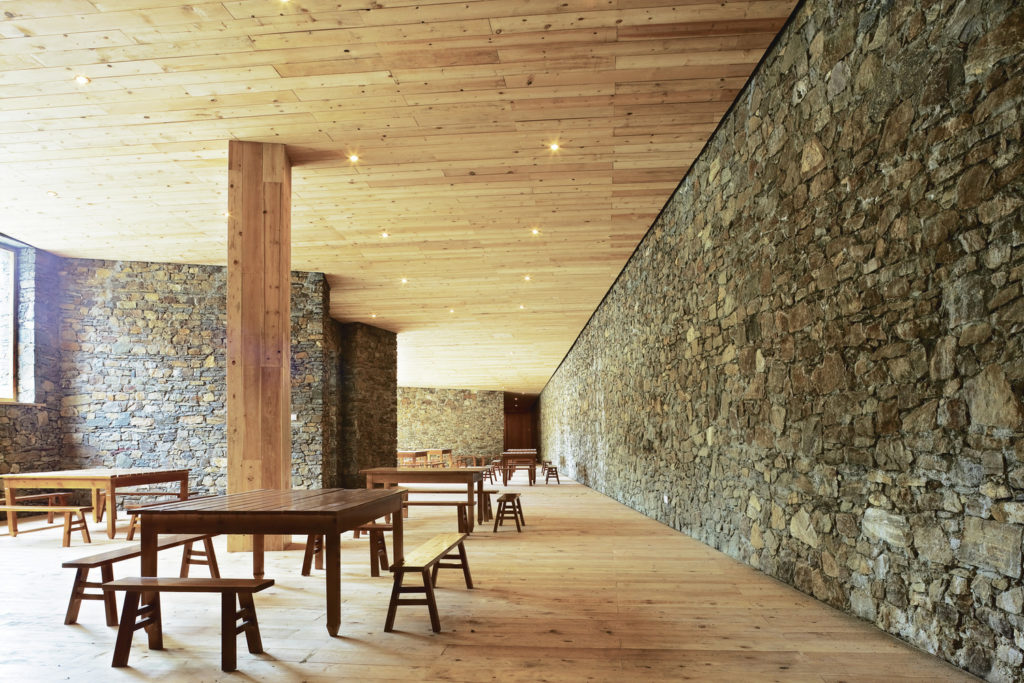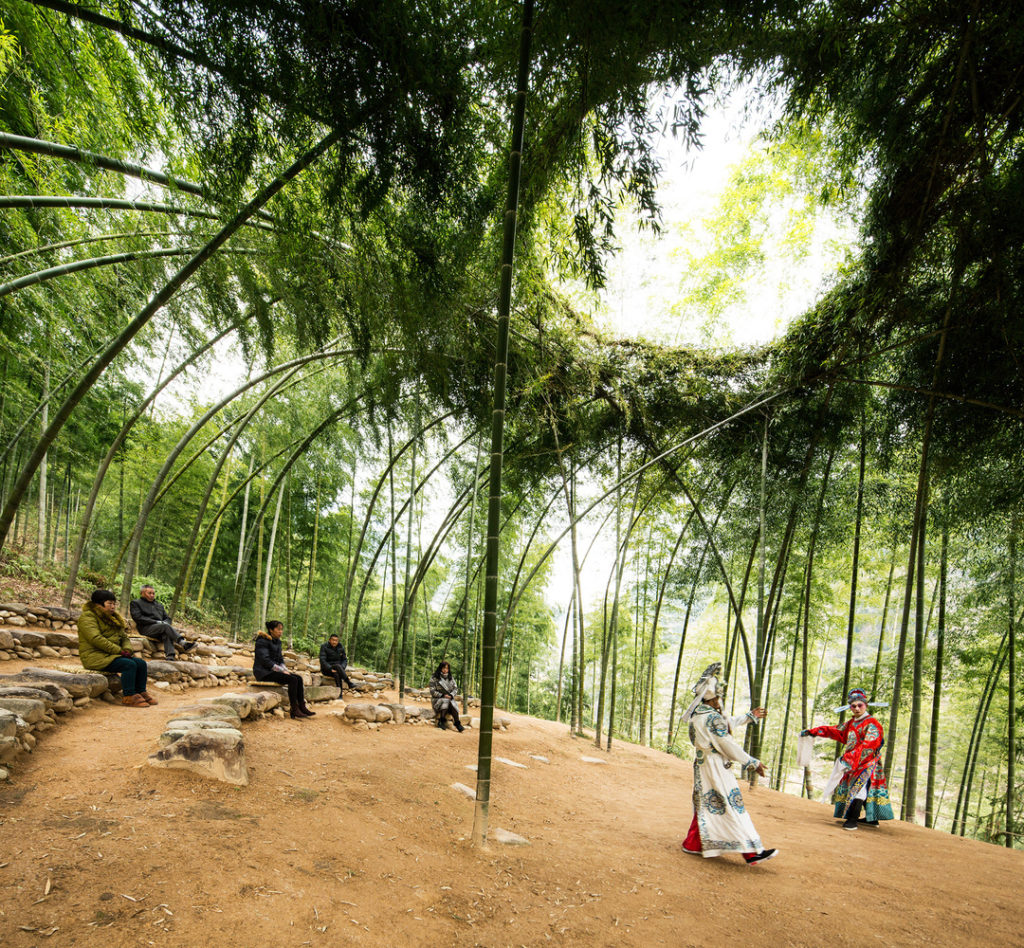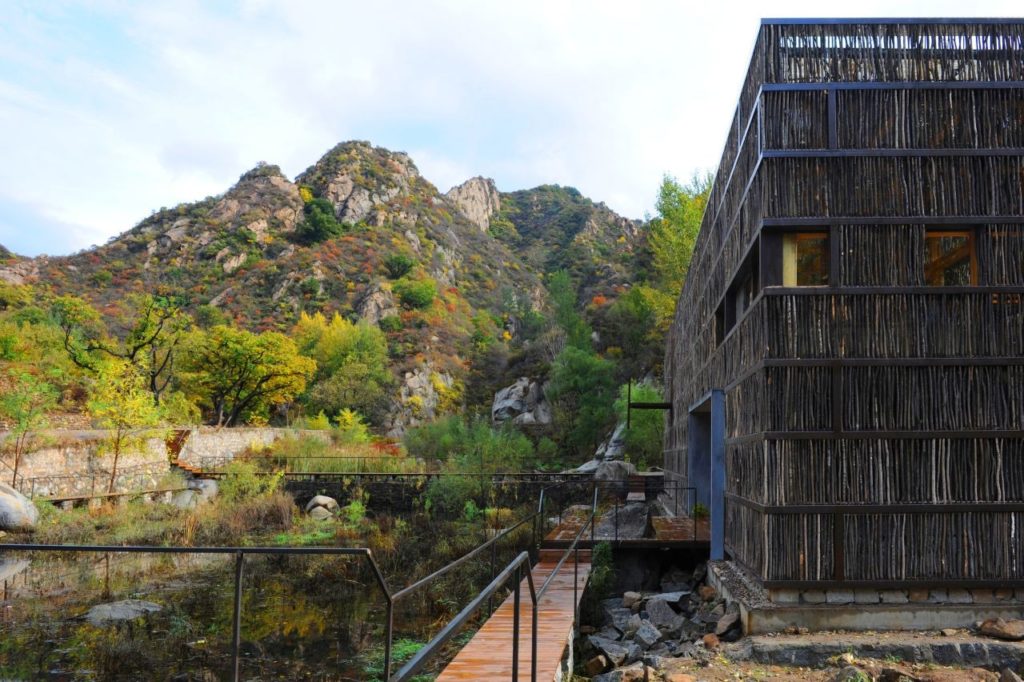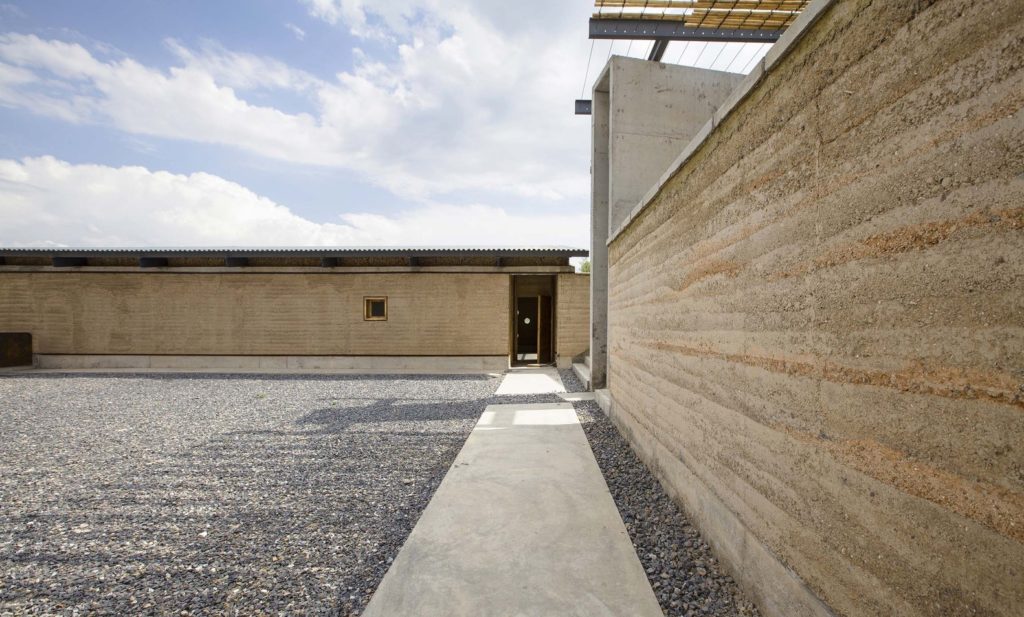This article shows how traditional materials, such as tiles, rocks, bamboo, wooden sticks, timber, rammed earth and bricks are being used in current architecture in China.
The Qingxiao Residence uses green tiles, rammed earth, masonry blocks, bamboo, old stone slabs, old rubble, and terrazzo recycled from demolished villages. Not only were the traditional building materials recycled, but also the traditional construction techniques were integrated into the new design. Piles of old tiles were carefully selected for use in a new wall. The quality, shape, and the position were meticulously planned so that the piles would form new walls structurally and aesthetically. Building from traditional and local materials saves cost and allows for innovation. When architects use materials that local residents are familiar with, they connect the past to the present.
Building from traditional and local materials saves cost and allows for innovation. When architects use materials that local residents are familiar with, they connect the past to the present.  Local rocks are the primary material in the Yaluntzangpu River Terminal project. The walls are made of rocks collected on site and built by local Tibetan masonry builders. As the most remote stop along the Yaluntzangpu River, this river terminal allows both local people and travelers to sense the local identity.
Local rocks are the primary material in the Yaluntzangpu River Terminal project. The walls are made of rocks collected on site and built by local Tibetan masonry builders. As the most remote stop along the Yaluntzangpu River, this river terminal allows both local people and travelers to sense the local identity.
Bamboo is an important Chinese cultural symbol and has been celebrated in poetry for its flexibility and strength. This theater stage for the village of Hengkeng uses bamboo to offer the theater a sparkling green lighting effect. Sitting in a bamboo grove and enjoying the stage performance brings people back in time, as if they are living like the “seven sages of the bamboo grove”, freely and organically.
Wooden sticks have been used to helps enhance the residents’ appreciation of the natural landscape. A small library located, in a rural village on the outskirts of Beijing, used wooden sticks to create a reading environment with bright natural light filtered and evenly spreading throughout the space.
The material was discovered by the architects when they saw the villagers gathering large amounts of locally sourced wooden sticks to fuel their cooking stoves.  In the History Museum of Qifeng Village, timber was chosen as the main on-siter material to preserve in order to establish some sort of inherent harmony with nature in this ancient village. From the wooden pillars to the wooden beams and rafters, timber speaks the language of older times.
In the History Museum of Qifeng Village, timber was chosen as the main on-siter material to preserve in order to establish some sort of inherent harmony with nature in this ancient village. From the wooden pillars to the wooden beams and rafters, timber speaks the language of older times.  The Macha Community Centre celebrates the lifestyle and traditional building with rammed earth. All materials for construction were taken directly from site. The process of taking the soil out of the land is itself a maintenance of the site to prevent it from further water and soil erosion. The rammed earth houses were built as if they were naturally growing out of the site, with the wind and local people’s memories and identities.
The Macha Community Centre celebrates the lifestyle and traditional building with rammed earth. All materials for construction were taken directly from site. The process of taking the soil out of the land is itself a maintenance of the site to prevent it from further water and soil erosion. The rammed earth houses were built as if they were naturally growing out of the site, with the wind and local people’s memories and identities.
The Temple for God Wealth is a space in which the behavior of villagers could be guided, so that the risk of mountain forest and environmental pollution could be minimized. The use of a hollow brick wall serves as a new type pf blessing facility, where people can roll up the red paper written with blessing words then put them into the hollow holes in the wall. With the passage of time, the brick wall holes gradually become filled up with red paper, linking the construction with its users, and initiating a process of growth. In this way, the building itself and human activities come together in unity.
In conclusion, the contemporary use of traditional materials not only embraces the old memories and lost customs in ancient villages, but also brings new life and activities to existing structures.
You can read the original article at www.archdaily.com
